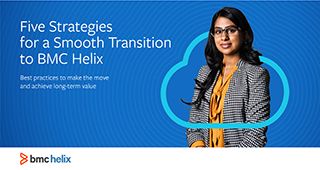For as long as I can remember, IT has been under pressure to keep technology costs in check. Most likely, you’re feeling that pressure too as your organization embraces SaaS to accelerate the transformation to an Autonomous Digital Enterprise. But today, controlling costs isn’t enough. The C-suite expects you to achieve business value from the money you’re spending and be able to clearly demonstrate that value to senior management.
In my previous blog on cost management, 5 Practices for Controlling Costs as You Move to SaaS, I discussed how to position your organization to manage costs effectively as you move to SaaS. In this blog, my focus is post-implementation SaaS cost management. I’ve found that a twofold approach works best:
- Continuously track SaaS costs and maintain clear visibility into the sources of these costs
- Assess and report on the value you are realizing from your SaaS investments
By considering both cost and value, you can make better-informed decisions and optimize spend for maximum return on your SaaS investment.
Tracking SaaS Costs
To cite a management truism, you can’t manage what you can’t measure. In the case of SaaS, you need to measure consumption because that’s what drives costs. Consumption metrics vary depending on the services the SaaS solution delivers. Examples include the number of transactions performed, the number of users, elapsed time used, and storage volumes.
Effective cost management ties consumption and related costs to line of business, department, or cost center, and ideally to individual users. Consequently, when you receive your invoice at the end of each billing period, you’ll have visibility into who is using the app and to what extent. With this insight, you can chargeback or showback costs and keep the appropriate managers informed of and sensitive to their SaaS usage and costs.
SaaS vendors offering enterprise-class apps usually provide data and reports for tracking usage and costs. The more mature the app, the more sophisticated the tools and the more robust the data. If you’ve worked with your SaaS provider up front to understand the data, tools, and reports available for tracking consumption and costs, you can put cost control mechanisms in place from day one. As a result, you’re ready to measure consumption and chargeback or showback right from the start.
The more you can automate cost data gathering, analysis, and reporting, the better. Automation is especially important for enterprises because the large number of user groups makes manual cost allocation difficult at best.
It’s essential to track usage and costs not only at invoice time but also throughout the billing period. This monitoring enables you to identify usage spikes and the groups creating those spikes. Some SaaS vendors provide dashboards and other monitoring tools that present usage in real time. Spikes can be due to wasteful service consumption or data growth. On the other hand, spikes may indicate wider than anticipated adoption of the SaaS solution and that’s a positive development that should be communicated.
Assessing Realized Value
Tracking costs is important. However, assessing the value realized is equally important because it enables you to optimize SaaS spend.
In my previous cost management blog, I explained how important it is to establish the high-level business objectives you want to achieve and identify the metrics you need to measure progress toward those objectives. Examples of objective categories include lower costs, higher revenue, increased employee productivity, improved customer experience, and reduced risk. Keep your list concise—approximately three to six critical objectives.
Ensure that the outcomes are measurable with objective metrics that align with the type of SaaS solution you have implemented. For example:
- Metrics for a service management solution might include first-call resolution rates and average incident resolution times. These metrics roll into high-level objectives such as higher service desk productivity, lower support costs, and improved customer experience.
- Metrics for a marketing automation system might include the number of qualified leads delivered to sales and the volume of campaigns created and executed in a given period of time. These metrics roll into high-level objectives such as increased revenue and customer centricity or stronger customer engagement.
Be sure to establish a baseline at the outset so you can compare before and after statistics.
If your SaaS vendor tracks these types of metrics and provides data and reports to its customers, take advantage of these capabilities to measure realized value. As with cost-tracking tools and data, you’ll find that the more mature the SaaS app, the more sophisticated the outcome tracking tools and the richer the data. You can then compare the value realized to the cost incurred to calculate return on investment. You may discover that, although you’re spending more than you expected, you’re receiving additional value that more than offsets the cost overrun.
Outcome tracking statistics also provide valuable feedback for monitoring the effectiveness of programs. For example, some marketing automation solutions track customer online behavior such as cart abandonment. This kind of feedback enables the marketing team to measure campaign effectiveness and fine tune ongoing campaigns to maximize effectiveness.
Tapping into the Vendors’ Expertise
Motivated by an intensely competitive environment, SaaS vendors are committed to helping their customers achieve maximum value from their SaaS solutions. Through engagement with customers over the years, mature vendors have gained valuable experience and expertise in a variety of businesses in different industries. This includes not only technical experience in integrating their solutions with their customers’ internal systems but also experience in helping customers realize maximum business value from their solutions.
Some vendors, including my company, have dedicated value realization teams that work with customers in establishing business objectives, identifying metrics to measure these objectives, and communicating successes to the organization. Take advantage of this expertise to help you establish meaningful business objectives, identify the right metrics, and demonstrate success.
A Broader Perspective for Success
Many organizations are moving to SaaS because of its many advantages over on-premises systems. Consequently, their SaaS spend is increasing and SaaS cost management has become a paramount consideration. By managing cost in the broader context of ROI, you can optimize SaaS spend to get the most business value from your SaaS solutions.
If you need assistance with your transition to SaaS, please fill out our form and a BMC Customer Success expert will reach out to get started.
Five Strategies for a Smooth Transition to BMC Helix
These postings are my own and do not necessarily represent BMC's position, strategies, or opinion.
See an error or have a suggestion? Please let us know by emailing blogs@bmc.com.







